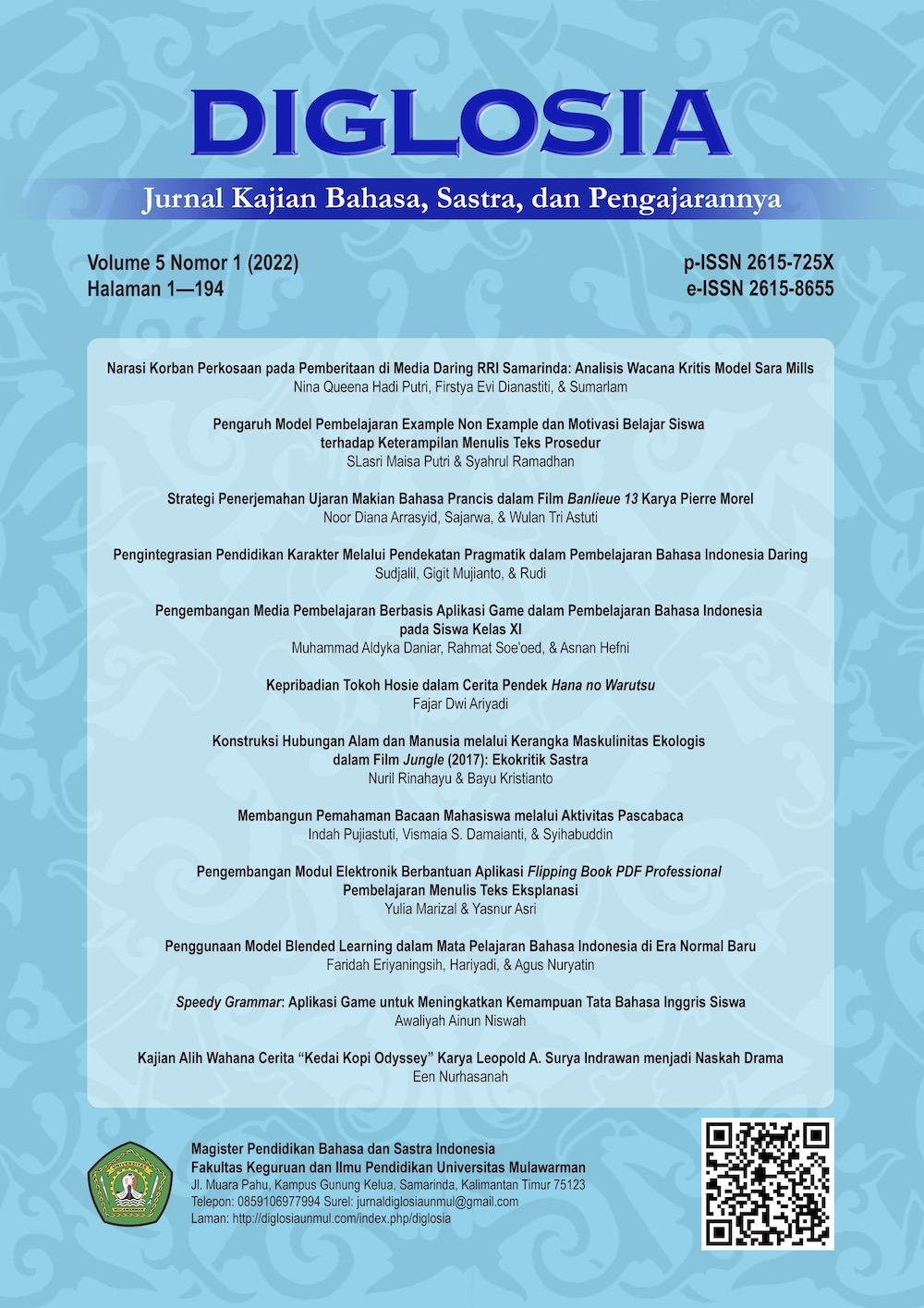Konstruksi Hubungan Alam dan Manusia melalui Kerangka Maskulinitas Ekologis dalam Film Jungle (2017): Ekokritik Sastra The Construction of Human-Nature Relationship through Ecological Masculinity in Jungle (2017) Movie: Ecocriticism
Main Article Content
Abstract
This study examines the construction of the human-nature relationship in the Jungle (2017) movie. Jungle movie presents the mindset and behavior of men through four male characters (Yossi, Marcus, Kevin, and Karl) towards the wild (wilderness) as a masculinity framework. Using a qualitative method with an ecocriticism approach, especially related to ecological masculinity by Hultman and Pulé, this study shows how the construction of human-nature relationships through masculinity framework presents ecological masculinity as a form of hegemonic masculinity negotiation. The analysis focuses on two aspects of film studies: narrative and cinematographic by Bogss and Petrie. The results of this study indicate that in the depiction of nature through the Amazon Forest, nature is positioned as something dangerous, wild, scary, and capable of killing humans. Therefore, nature is represented as an entity that dominates humans. However, men's mindset and behavior towards nature present the illusion of a human versus nature dichotomy; in this case, the Jungle movie tries to present a critique of anthropocentrism. In addition, the mindset and behavior of male characters toward nature represent male masculinity models, especially ecological masculinity, as an alternative to hegemonic masculinity.
Downloads
Article Details
![]()
Every work in Diglosia: Jurnal Kajian Bahasa, Sastra, dan Pengajarannya is licensed under a Creative Commons Attribution-ShareAlike 4.0 International License.
Under the following terms:
- Attribution — You must give appropriate credit , provide a link to the license, and indicate if changes were made . You may do so in any reasonable manner, but not in any way that suggests the licensor endorses you or your use.
- ShareAlike — If you remix, transform, or build upon the material, you must distribute your contributions under the same license as the original.
- No additional restrictions — You may not apply legal terms or technological measures that legally restrict others from doing anything the license permits.
Authors who publish with this journal agree to the following terms:
- Authors retain copyright and grant the journal right of first publication with the work simultaneously licensed under a CC BY-SA 4.0 DEED Attribution-ShareAlike 4.0 Internationalthat allows others to share the work with an acknowledgment of the work's authorship and initial publication in this journal.
- Authors are able to enter into separate, additional contractual arrangements for the non-exclusive distribution of the journal's published version of the work (e.g., post it to an institutional repository or publish it in a book), with an acknowledgment of its initial publication in this journal.
- Authors are permitted and encouraged to post their work online (e.g., in institutional repositories or on their website) prior to and during the submission process, as it can lead to productive exchanges, as well as earlier and greater citation of published work.

